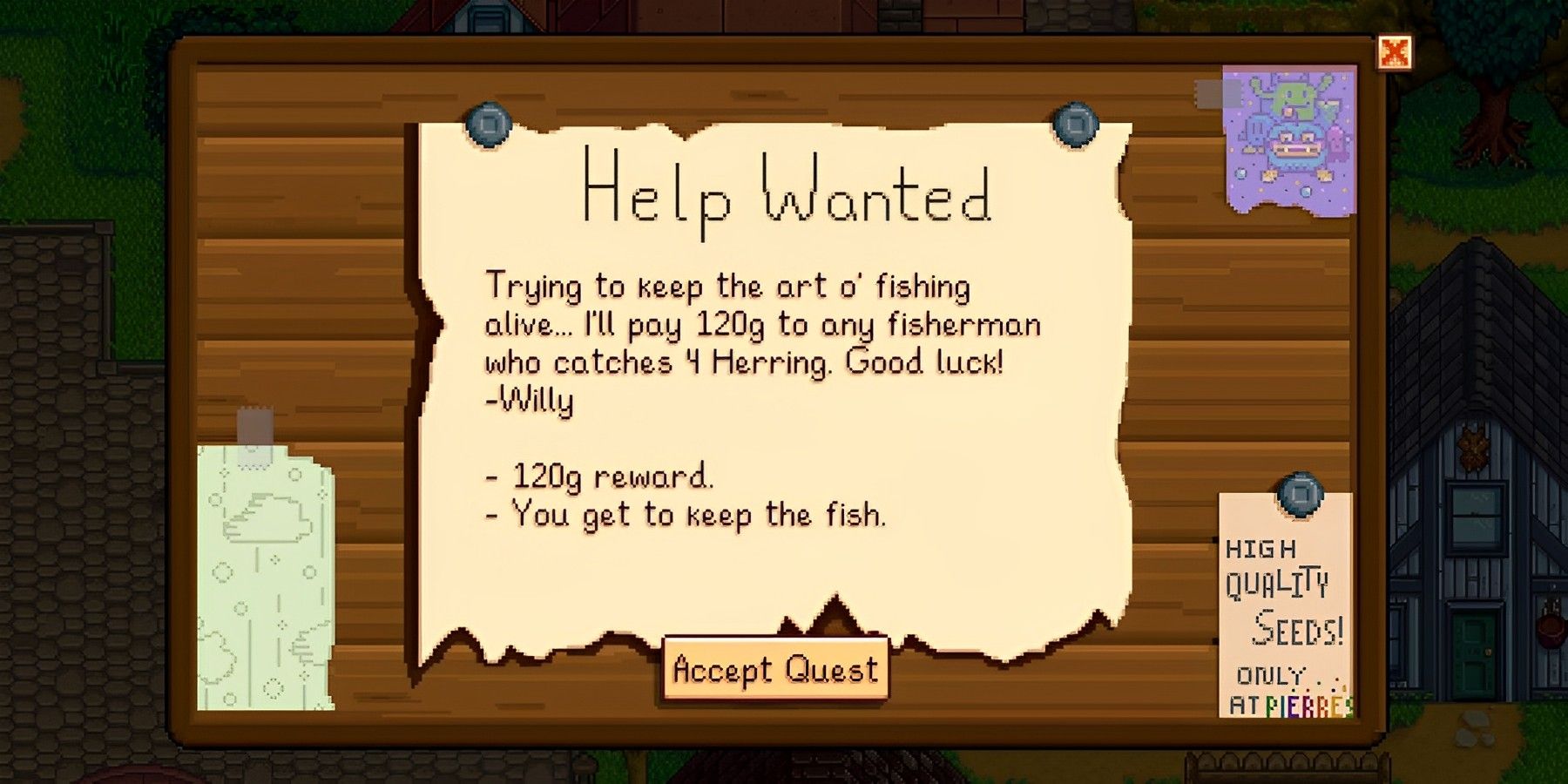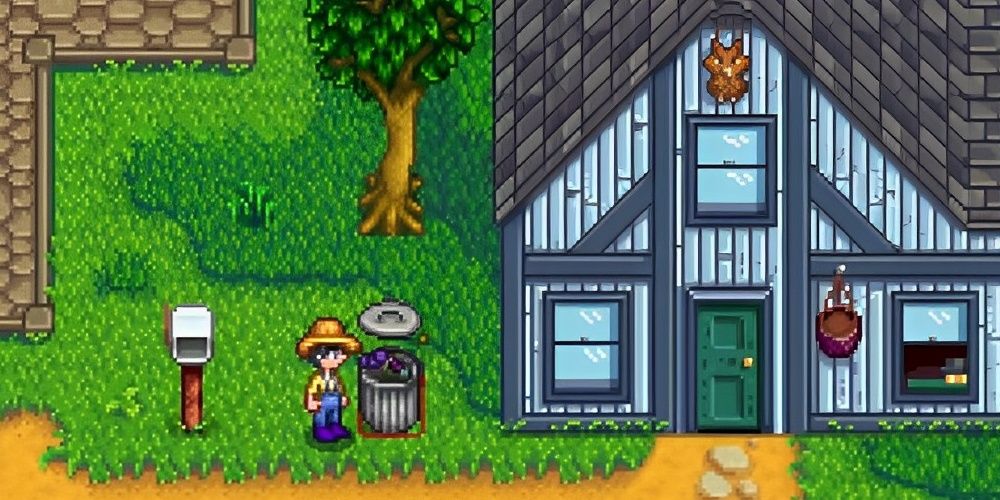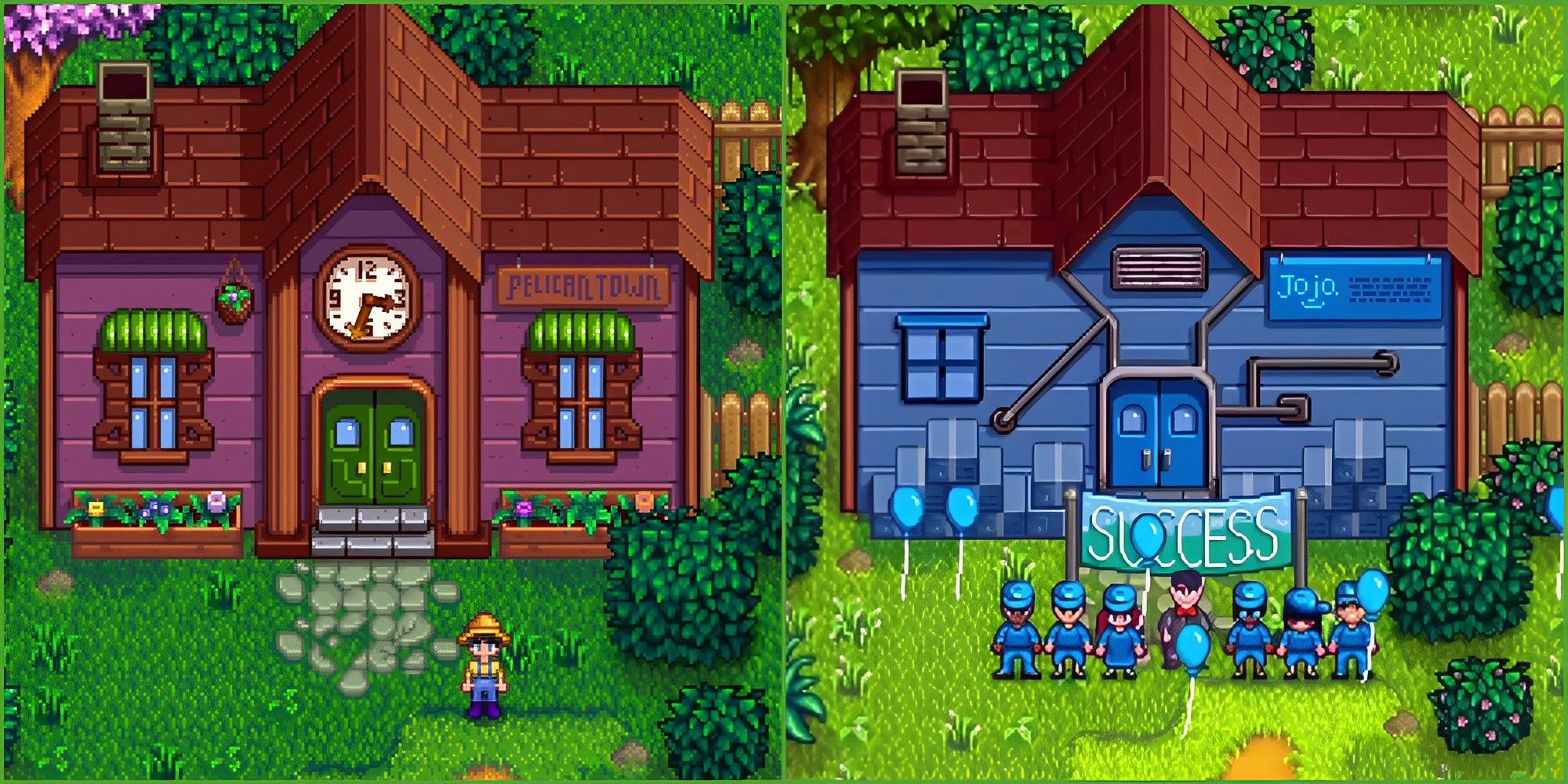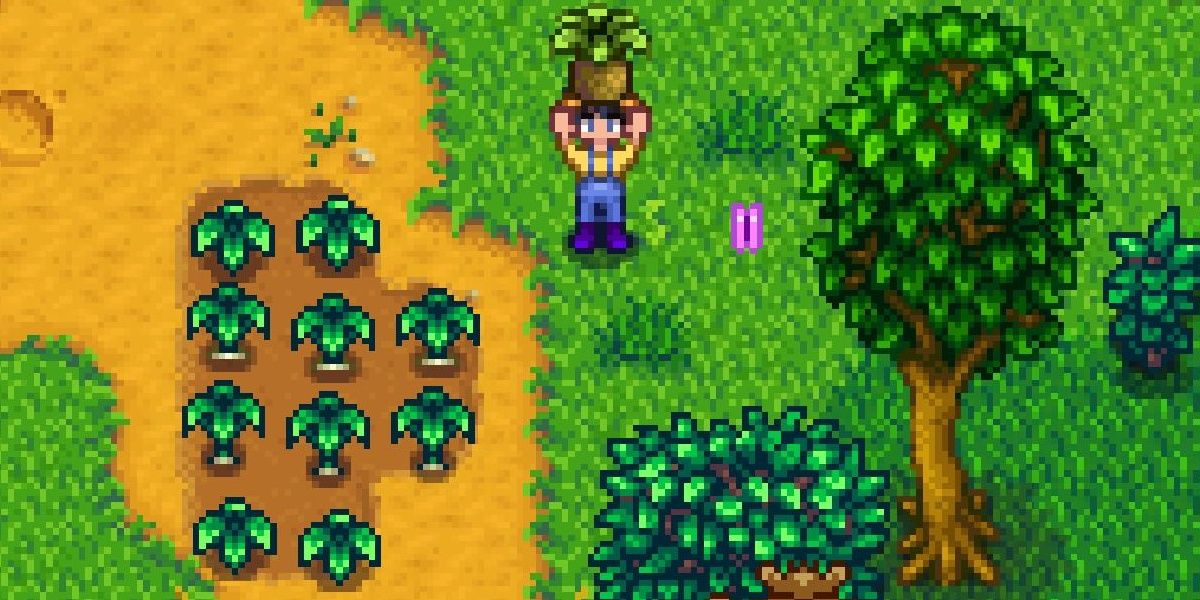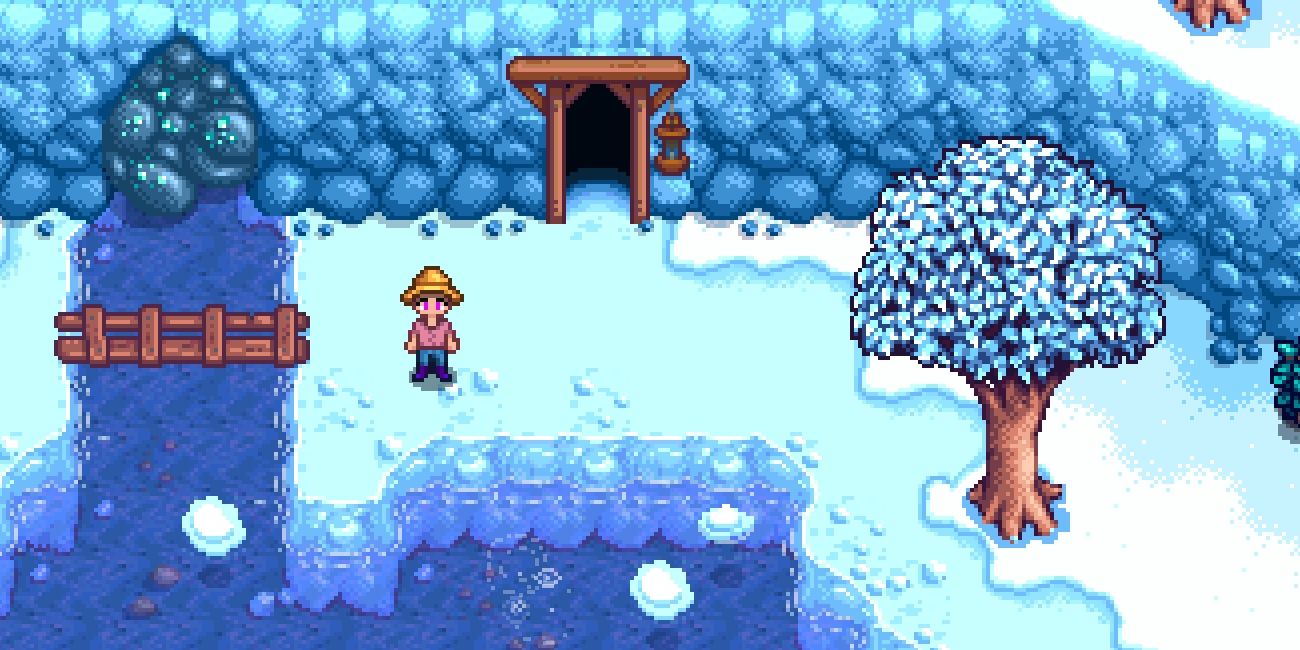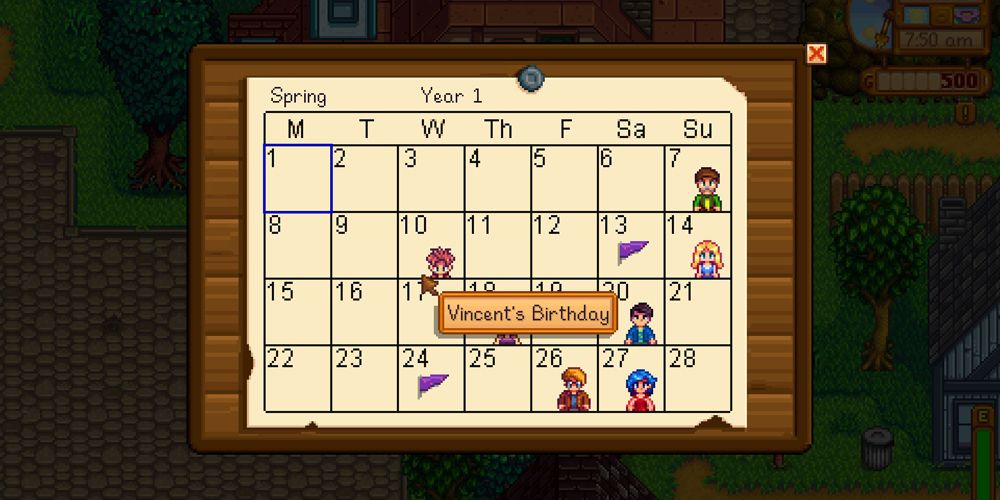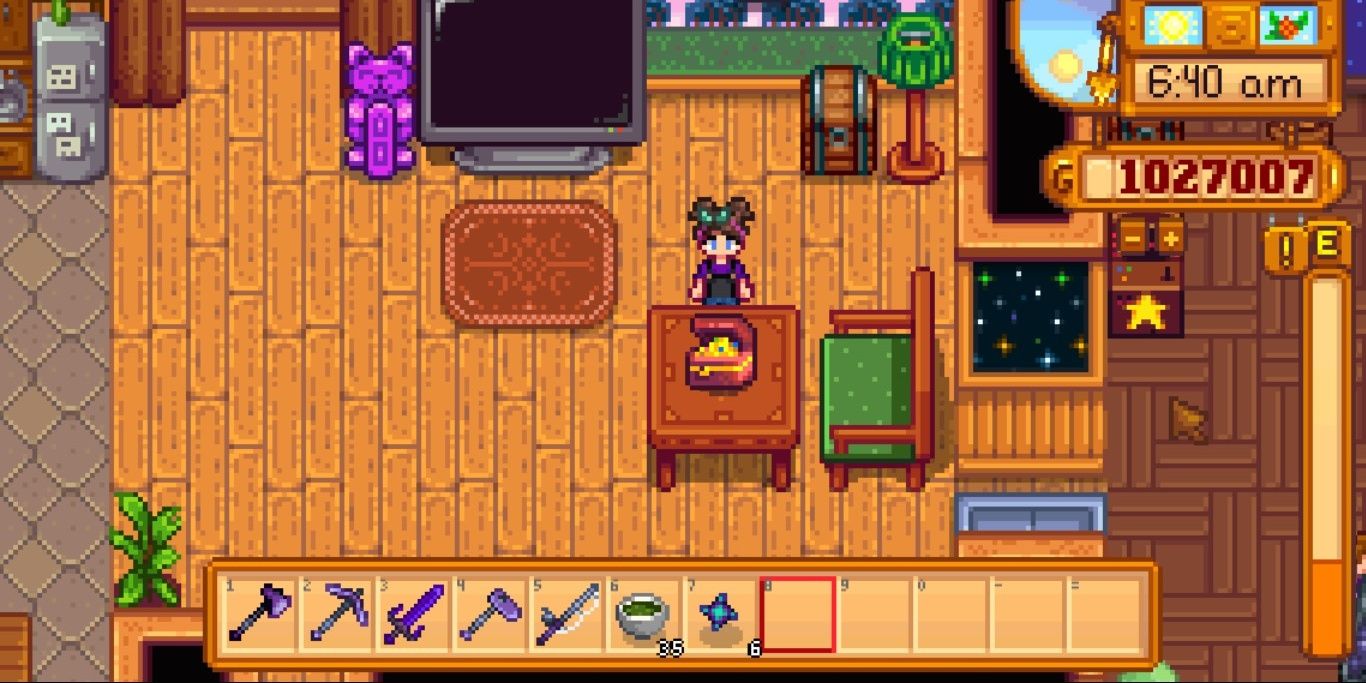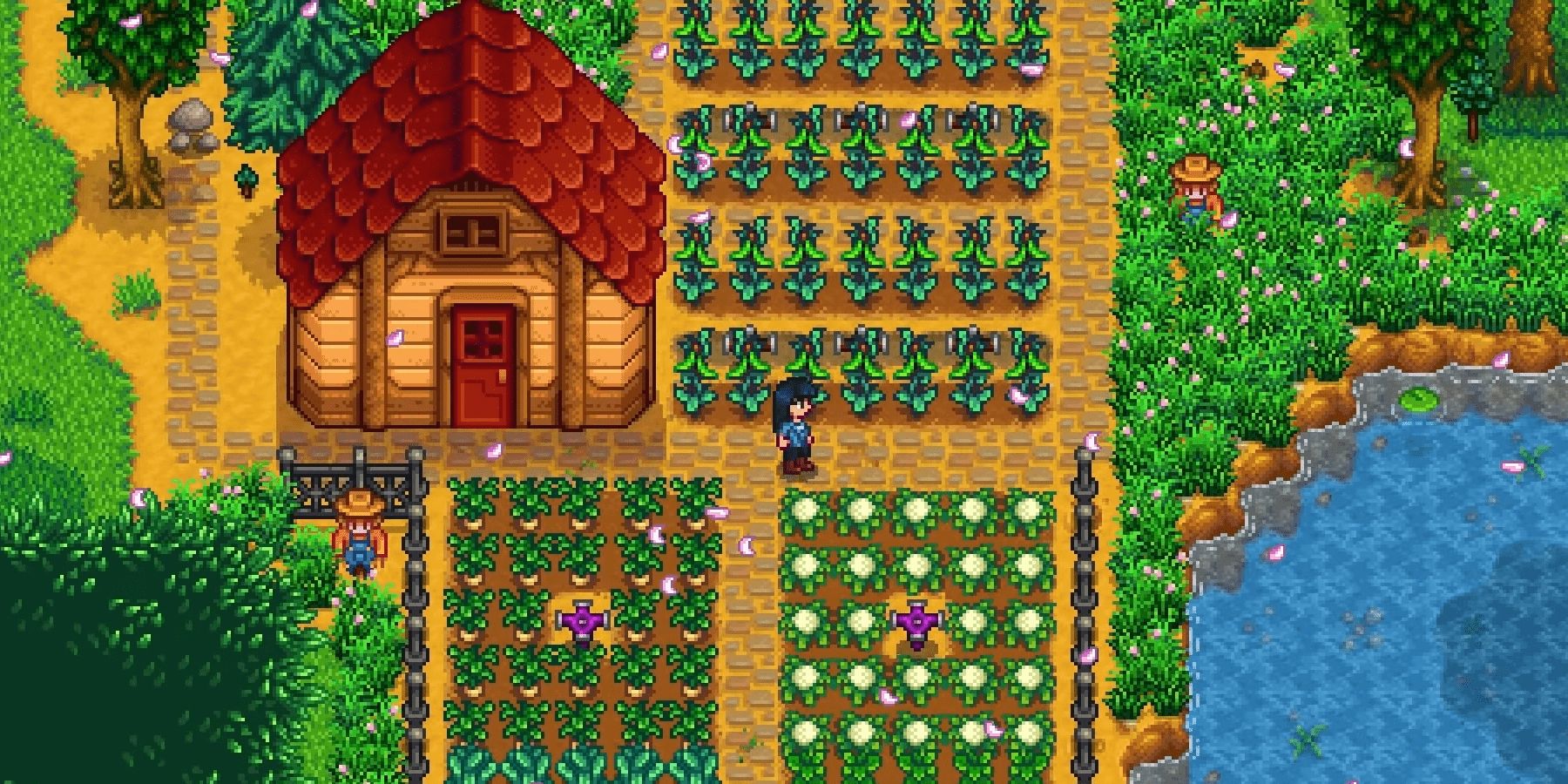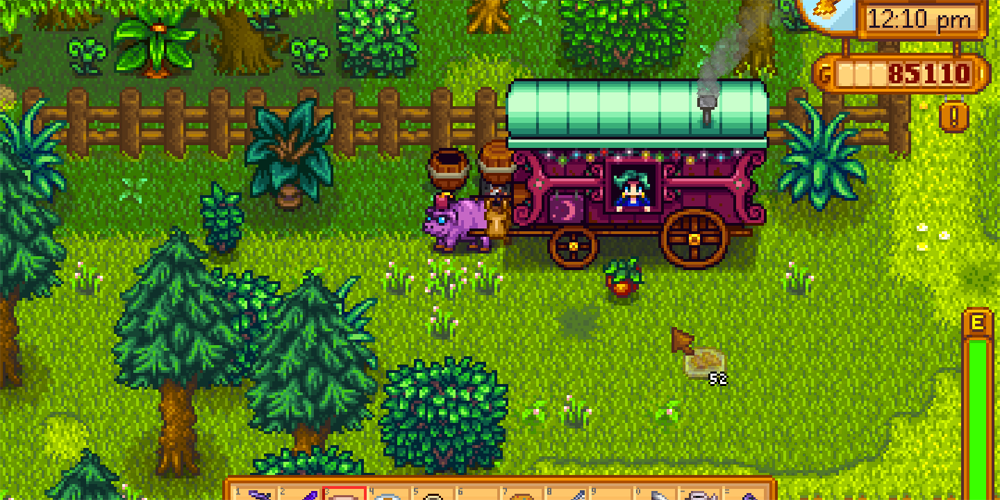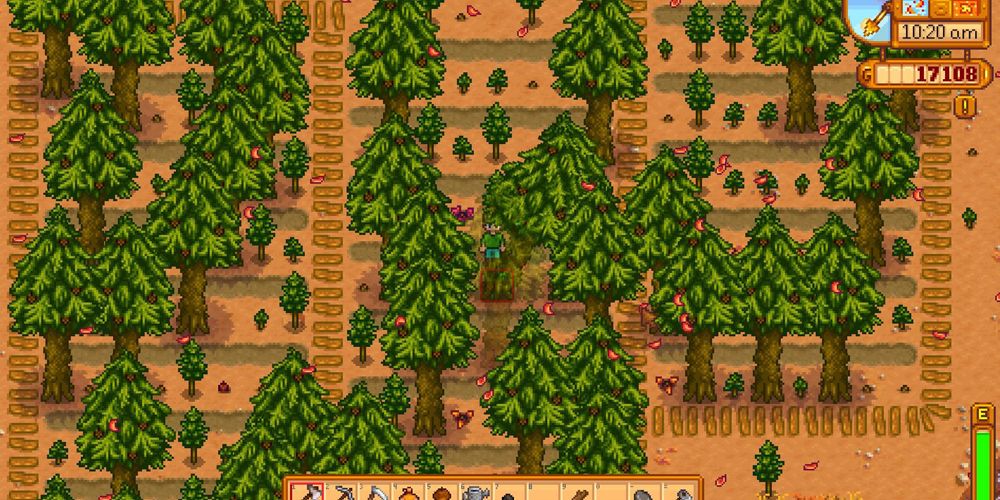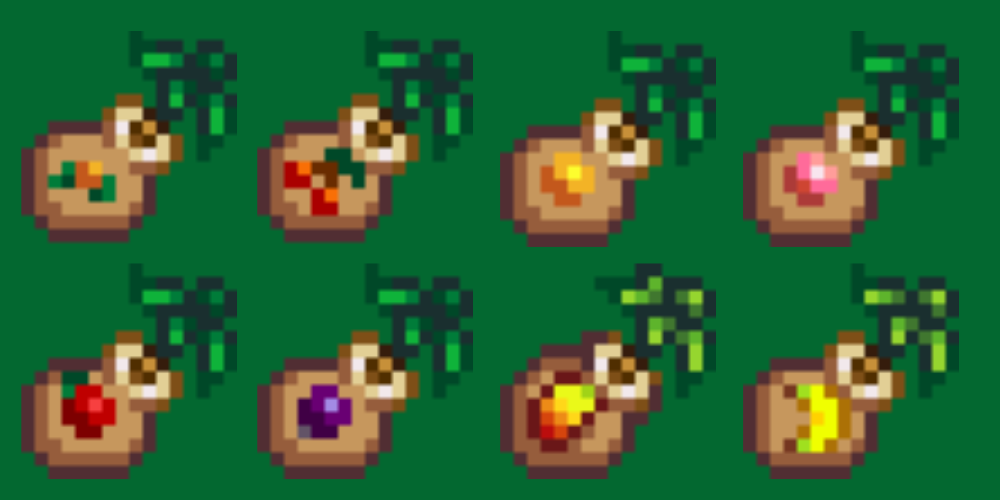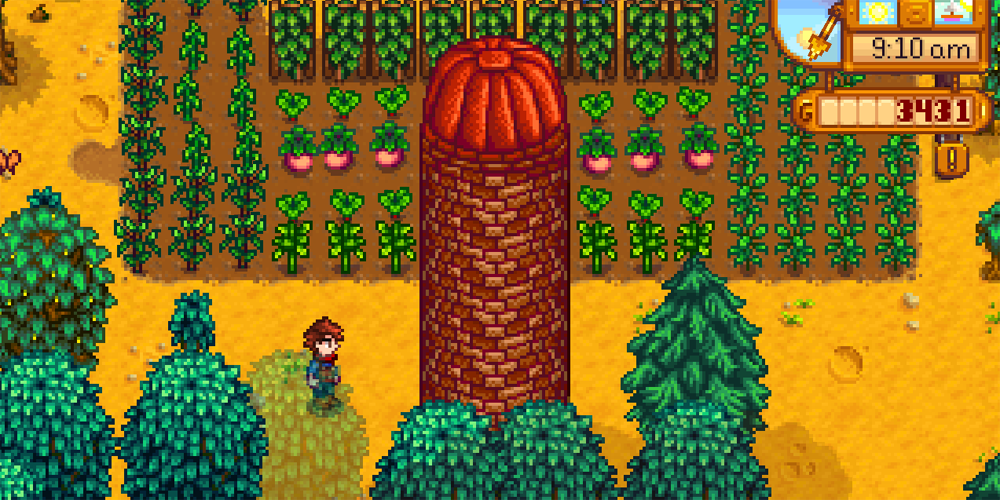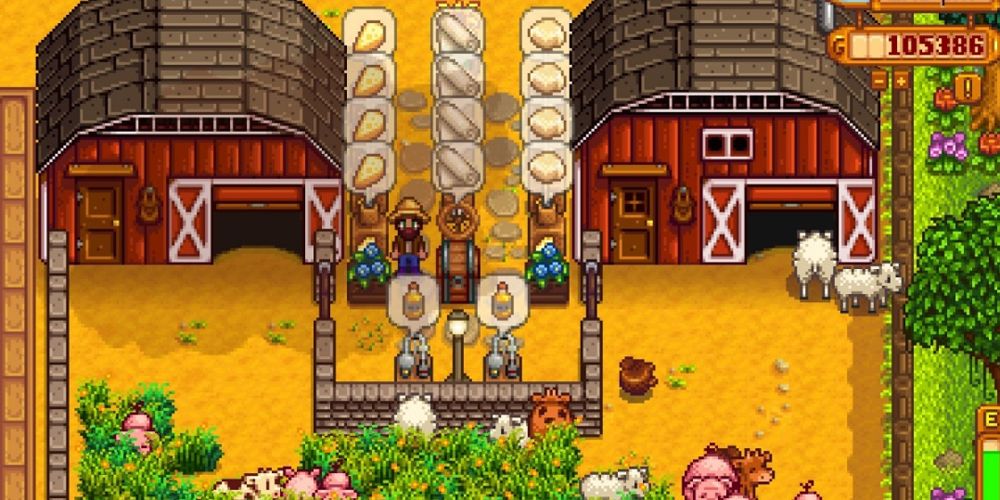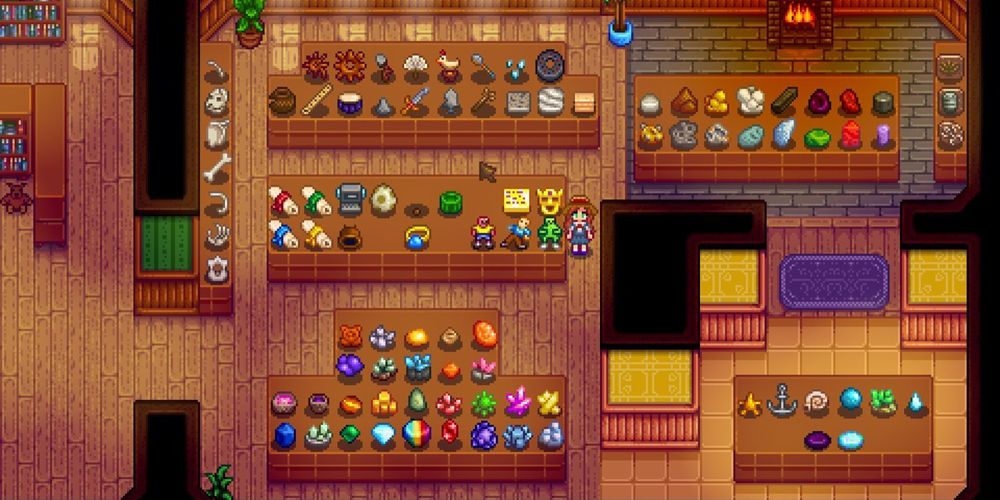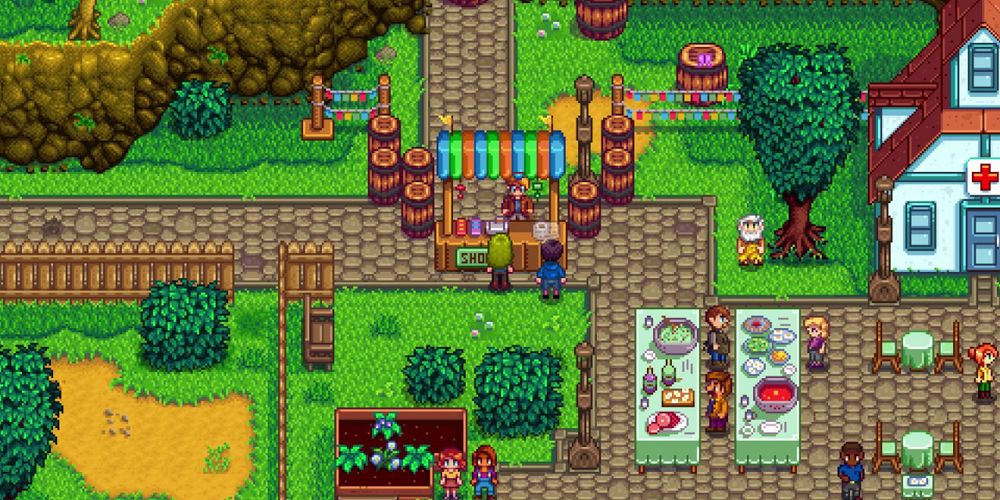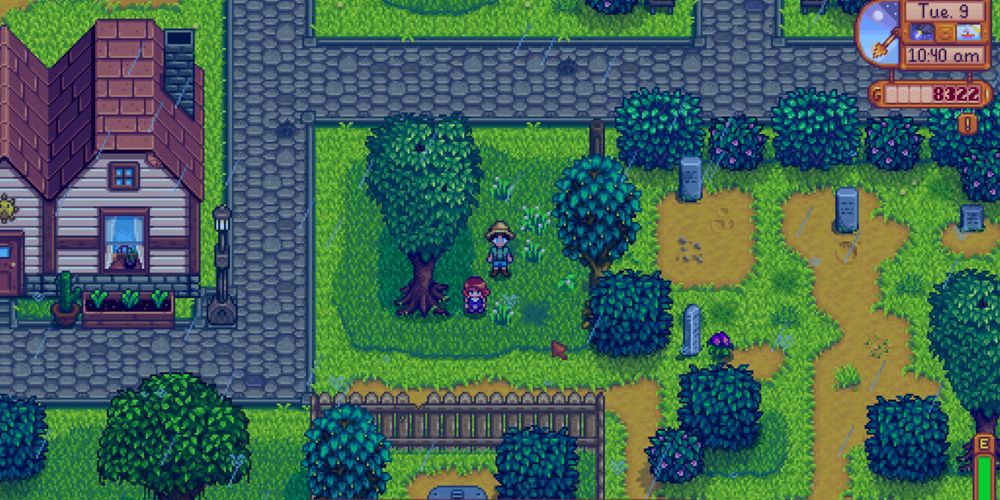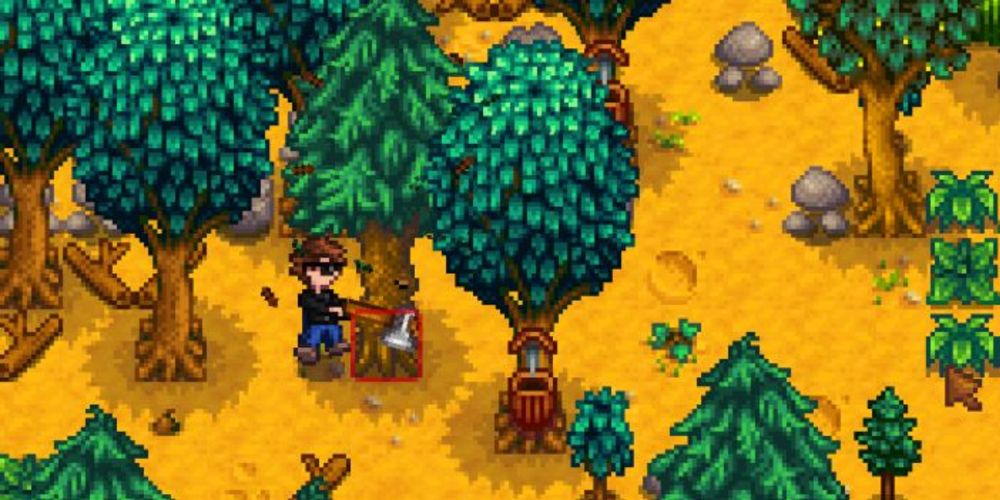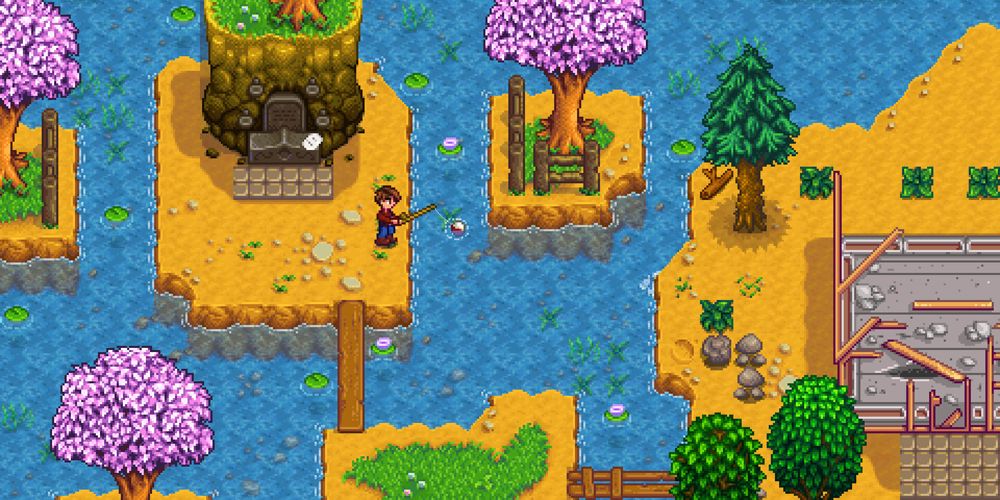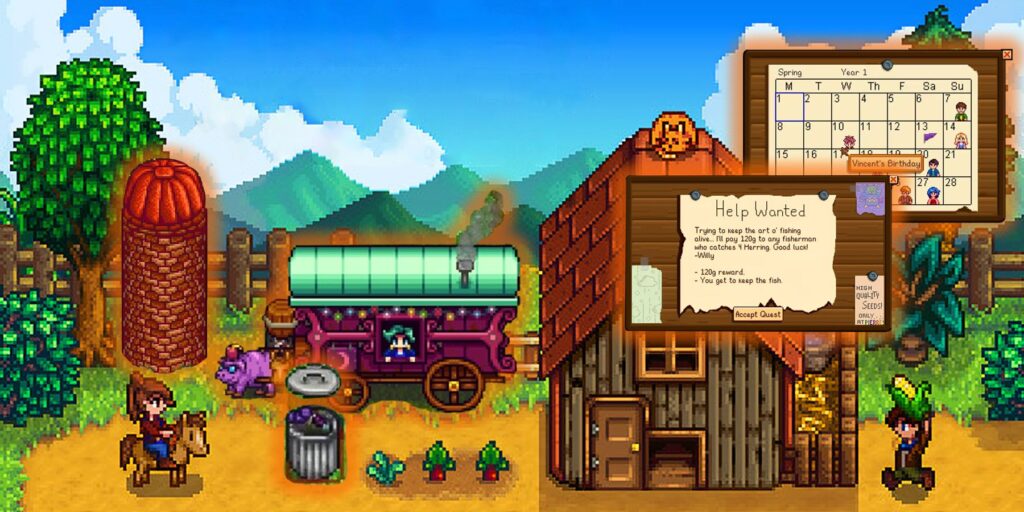
Highlights
- Upgrade your backpack early for more inventory space. It will make your farming trips more efficient.
- Complete bulletin board and special order requests for rewards in gold, friendship, and resources.
- Dig in the trash cans around town to find valuable items and save them for later use. Just make sure nobody sees you!
Players take on the role of the new farmer in town in Stardew Valley, renovating their late grandpa’s farm and making some friends along the way. In Pelican Town, there’s a lot to do to make the farm boom – but for players brand new to the farming simulator life, where should they start?
With crops to grow, events to attend, and mysteries to unravel, new players of Stardew Valley might feel a bit overwhelmed with choices in their first year of their time in the town. The game runs in a seasonal format – four seasons, each 28 days long – so getting rid of all the trees and rocks that have populated ol’ Grandpappy’s farm is just the first thing to check off a lengthy first-year to-do list.
Updated on Dec 1, 2023, by Rosie Sedgwick: Patch 1.6 for Stardew Valley is on the way! As players await developer ConcernedApe’s newest game, Haunted Chocolatier, some players will be headed back to Pelican Town for a new farm to play around in. New players might find it a little overwhelming with dozens of ways to play the game’s first year, but fear not: the following article has been updated with some tips and tricks to have a bountiful first year in Stardew Valley.
20 Upgrade The Backpack
More Space Means More Money
From hoes to pickaxes, Stardew Valley provides players with everything they need to make their farm thrive at the beginning of the game. Despite this, the farmer’s five main tools take up nearly half of the starting inventory, meaning players will have to make frequent trips to the farm to sell valuable items and make space for new resources.
As soon as possible, players should save up to 2,000g to buy the first backpack upgrade from Pierre. Not only does it give the farmer a total of 24 inventory slots, but it also makes fishing, mining, and foraging trips more efficient. Once players have the expanded inventory, a second upgrade will be available for 10,000g.
19 Accept Bulletin Board & Special Order Requests
Good Deeds Never Go Unrewarded
Next to Pierre’s General Store is a bulletin board where townsfolk leave daily requests they want the farmer to complete; these can be anything from catching a fish, slaying some slimes, or even bringing gemstones or Sea Cucumbers (for girls only, according to Haley’s requests). Completing these quests will award players with gold, friendship, and even resources for their efforts.
In the 1.5 update, a Special Orders board was added to the game, which gets built in front of Mayor Lewis’s house on Fall 2 of Year 1. These requests have longer deadlines to complete (a week or even a whole season), but require much larger amounts of goods. Of course, the rewards are scaled up with the requests – players that bring the needed items to the townsfolk are rewarded with a cut-scene for their efforts.
18 Dig In The Trash
One Man’s Trash Is Another Farmer’s Treasure
Digging in the trash may not seem like the most enjoyable activity in a cozy farming simulator, but players should consider the villagers’ trash their farmer’s treasure during the first year when money, food, and resources are tight.
In the garbage cans around town, players can find gems, food, and other valuables. Certain trash cans, such as the one near the saloon, even have the chance to drop unique items. Of course, players will occasionally find trash in the trash, but even that can be valuable if they save it until they have a Recycling Machine handy. No matter what players find, however, they’ll want to make sure no one else is around when they reach into the nearest garbage can, as getting caught can damage the farmer’s relationships with the townspeople.
Bundles Unlock More Useful Features
On a sunny day around the fifth of spring, Mayor Lewis unlocks the Pelican Town Community Center, just behind the main town square. This building will be up to the player to renovate: either restore the center themselves by donating goods to the various bundles, or join competing mega-corporation Joja Mart’s membership scheme, which makes Lewis sell the building to them for a new warehouse.
The bundles unlock super useful features around Pelican Town for players to utilize, from mine carts that allow fast-travel abilities to a greenhouse on the farm for year-round crops. To unlock the mine carts, the Boiler Room bundle must be completed; the greenhouse is unlocked by finishing the Pantry bundle.
16 Gather Seasonal Forageables
Those Flowers Are Worth A Pretty Penny
As players walk around town, they can find various fruits, vegetables, or other forageable items to pick up. However, while some, like shells on the beach, appear consistently throughout the year, many change with the seasons.
With leeks, dandelions, daffodils, wild horseradish, spring onions, and salmonberries, spring has the widest variety of plants for players to gather as they explore. Nonetheless, players should take advantage of every season’s forgeable items. Not only are they part of the community center if players choose to restore the building, but forageables can also be sold or used as food while enjoying other activities.
15 Spend Winter In The Mines
Hit The Jackpot With Much-Needed Resources
Winter brings a quiet period on the farm; crops don’t grow under snow, after all. For players twiddling their thumbs and waiting for spring to come, there’s a few different things to do after tending to animals – one of the most useful being the mines.
Visiting the mines each day in winter will allow players to hoard precious Wood and Stone for crafting, as well as find the necessary ore for upgrading their tools for the new year. For players who decided to renovate the Community Center without the help of Joja-Mart, plenty of the bundles need gemstones and ore that can be found in the mines, too!
14 Go To Every Festival
Prizes Await The More Competitive Players
Festivals in Stardew Valley happen around two to three times each season. They’re excellent opportunities to get to know the locals, participate in special competitions, and buy unique goods. The Egg Festival in Spring, for example, is the only source of Strawberry seeds. Meanwhile, elusive deep-sea fish can only be caught at the Night Market.
At first, it might seem like going to a festival is a waste of time that could be better spent fixing up the farm or collecting resources, but as long as players make sure to water their crops and feed their animals before leaving for the festivities, it’s quite the opposite.
13 Keep An Eye On The Calendar
Better Not Forget Someone’s Birthday!
Outside of Pierre’s General Store is a calendar that lists each season’s festivals and everyone’s birthday. Players can boost friendship by gifting townsfolk their favored gifts on their birthdays, which is an easy way to start off on the right foot with each citizen of Pelican Town.
The festivals provide fun events and even better prizes for players who attend each one, and it’s good to keep tabs on when each festival is… as the areas where the events take place shut down for the entire day to prepare for the party. Be ready for Pierre’s to be shut on the days where the town-wide events take place and prepare seeds accordingly!
12 Befriend Townsfolk
They’ll Repay Your Kindness Tenfold
Alongside the bachelors and bachelorettes of Pelican Town, there are a few different townsfolk that can be great friends – especially during the first year, when gold is pretty scarce. While some of the townsfolk provide cute cutscenes that dig a little deeper into their characters, some characters give pretty great gifts for early-game cash.
Townsfolk like Marnie, Caroline, and even Willy can provide useful recipes, resources, and ways to get rich quick, especially thanks to Caroline’s Tea Leaves that she teaches players to make.
11 Plan The Farm
Preparing For The Future Never Hurts
As players progress through year one, they’re likely to start thinking about their future plans for the farm. In later years, for instance, most players will likely end up building a stable to get a horse, helping them get around the farm and Pelican Town faster. When first starting to construct different buildings and structures around the farm, do a little planning first to ensure that the layout works and that a horse will be able to get through the gaps between buildings, as they require a bit more room to move around than the player does.
Particularly motivated players can even find a screencap of their preferred farm’s layout and map out where to put everything, finding the perfect place for coops, barns, silos, and ponds with the right spacing.
10 Visit The Merchant
She Provides Weird & Wonderful Goods
Should the player choose to complete the community center instead of getting a Joja membership, they will need to gather several rare and difficult-to-find items for the bundles. At times, these items may not even be introduced during the first year, making the community center even more challenging to complete quickly.
Luckily every Friday and Sunday, a traveling merchant parks her storefront in the forest south of the farm. She sells a variety of valuable and elusive items, including the rare Red Cabbage that players need for the community center bundles but can’t otherwise get during the first year.
9 Make Tappers
Stock Up On Sap & Syrups
After reaching the third level of Foraging, players can craft tappers using 40 pieces of wood and two copper bars. Once made, tappers can be placed on trees to provide the player with oak resin, maple syrup, and pine tar. While players can sell these as artisan goods, they’re also used to craft a variety of items and machines in the game.
As soon as the recipe is available, make some tappers and place them on all different types of trees around the forest and farm to stock up on essentials.
8 Plant Fruit Tree Saplings
Fruit Can Be Used For Building Bundles Or Building A Fortune
Some of the more expensive items that players can buy from Pierre’s General Store are the various fruit saplings, worth 2,000 Gold apiece. While these cost a pretty penny, they’re definitely an investment that players will want to cash in on in the first year of their time in Pelican Town.
Fruit of various kinds – apricots, cherries, oranges, peaches, apples, and pomegranates – are needed for Community Center bundles, gifts, and recipes, but the trees take an entire season to grow. After unlocking Ginger Island, banana and mango saplings are available for purchase. Plan accordingly and grow fruit trees in time for their various seasons!
7 Build A Silo
Hoard That Hay
All kinds of stray grass grow around the farm, and although it may be tempting for players to whip out their scythe and cut it all down right away, they should resist the urge until they’ve requested and received a silo from Robin. Using the scythe on that grass will deposit hay into the silo, which can be used to feed animals later on.
Even if players don’t think they’ll be ready to get a barn or coop during the first year, it’s still important to place a silo somewhere on the farm to collect hay in the meantime. Otherwise, plan to make a lot of trips to Marnie to purchase it, especially during Winter.
6 Get Animals
They’re A Worthy Investment
Animals provide valuable products for selling, cooking, and bundle completing, so players should save up gold and resources to build coops and barns as soon as possible. Robin can build the homes for the farmer’s friends within two days of giving her enough gold to do so.
For players looking for some variety in their chicken coops, try befriending Shane, Marnie’s nephew. He’s not only an eligible bachelor, but after his eight-heart friendship event, he unlocks the ability to buy blue chickens from Marnie’s shop.
5 Donate Artifacts
A Full Museum Is A Happy Museum
During their time in Pelican Town, players will likely see little lines wiggling back and forth on the ground. These lines might look like worms, stems, or twigs, but they’re called artifact spots. If players hit them with their hoe, resources, lost books, or artifacts will pop out. While certain artifacts, like gems, can also be found while breaking geodes, hitting artifact spots is a great way to find location-specific items to donate to the library’s museum.
Most artifacts aren’t worth much money on their own, so donating items is often the best use for them whenever they turn up. As an extra incentive, once the museum receives more and more donations, Gunther starts giving out valuable rewards. Any artifacts the player has yet to contribute to the town’s collection will have the description text, “Gunther can tell you more if you donate this to the museum.”
4 Save For Strawberries
The Most Expensive Berries Around
Every crop in Stardew Valley only grows during certain seasons – until the player has a greenhouse. While some are more valuable than others, strawberries are known as one of the best crops for spring, if not one of the best crops in the game. During the first year, however, the plant is only available for sale at the Egg Festival on the 13th day of spring.
Be sure to save some money from selling other crops to be able to buy some strawberry seeds at the Egg Festival. It may also be worth taking a mining trip or two before the festival to have even more cash on hand. Strawberries are worth a lot of money, but they’re worth even more if the farmer waits to plant them for another year, as they produce fruit continuously throughout the season. Once players have their own strawberries, they can then be put in the seed maker to create even more strawberry seeds.
3 Mine When It Rains
Stock Up On Ore & Resources
During the first year, players probably won’t have a lot of free time between watering plants, talking to NPCs, and gathering resources around town. However, when it rains on the farm, players are free to do anything they like since they don’t need to water their crops.
Without any other pressing obligations, rainy days are a rare and valuable opportunity to head to the mines in the morning and take advantage of everything they offer. If the television says it’s a good luck day in addition to the rain, the mining trip could be particularly productive, but it may also be a good idea to clear out the farm, fish, and talk to the townsfolk.
2 Chop All Those Trees
Get Some Space (And Some Wood)
No matter what farm layout a farmer picks at the start of their save, the farm usually has trees spread throughout its outer edge. As players begin to plant more and more crops, these trees will be in the way, making it difficult to expand the farm in an organized manner.
When they aren’t busy with other time commitments, players may want to spend time clearing the trees in their area and planning for expansion. Not only will this help make things much easier in the future, but it will also give players an abundance of free wood, which can be rather helpful in the early parts of the game.
1 Check The Fish
Gold Awaits Under The Water
Although many players find fishing difficult compared to the other skills in the game, catching fish is a vital part of Stardew Valley. In the early game, fish are a great source of revenue, but players can also use fish to make recipes and complete the community center bundles. Like crops, many fish are only available during specific seasons. However, they can also be limited to specific types of weather, at certain times of the day, in particular bodies of water. It’s a lot more complex than first meets the eye.
Before going out to fish, players can check the Fish Tank Bundle and Bulletin Board Bundle to see where to focus their efforts. Figuring out when each fish is available can take time, but donating as many of them as possible during the first year is a rewarding experience.
Stardew Valley is available on PC, PlayStation 4, Xbox One, Nintendo Switch, Android, and iOS.
